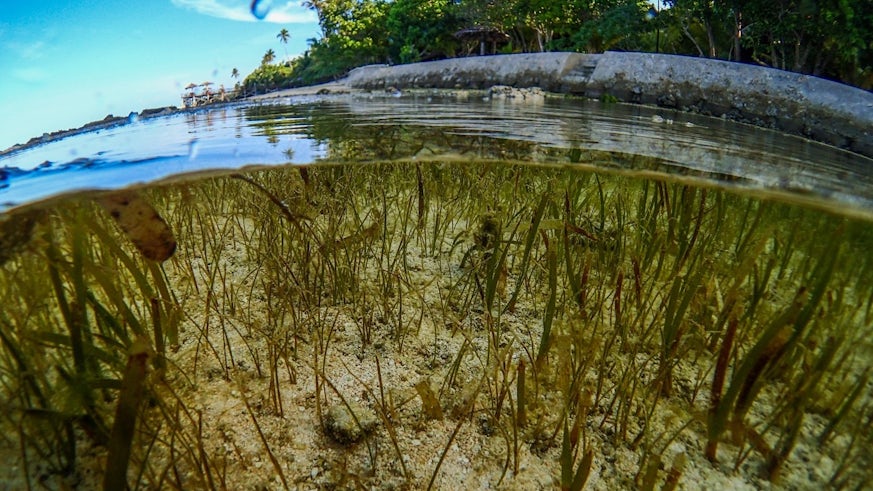World’s biggest fisheries supported by seagrass meadows
22 May 2018

Scientific research, led by Dr Richard Unsworth at Swansea University in partnership with Dr Leanne Cullen-Unsworth of Sustainable Places Research Institute, has provided the first quantitative global evidence of the significant role that seagrass meadows play in supporting world fisheries productivity.
The study provides evidence that a fifth of the World’s biggest fisheries, such as Atlantic Cod and Walleye Pollock are reliant on healthy seagrass meadows. The study also demonstrates the prevalence of seagrass associated fishing globally.
The study, carried out with Dr Lina Mtwana Nordlund at Stockholm University, demonstrates for the first time that seagrasses should be recognised and managed to maintain and maximise their role in global fisheries production.
Seagrasses are marine flowering plants that form extensive meadows in shallow seas on all continents except Antarctica. The distribution of seagrass, from the intertidal to about 60m depth in clear waters, makes seagrass meadows an easily exploitable fishing habitat.
Dr Richard Unsworth from Swansea University’s Biosciences department said: “Seagrass meadows support global fisheries productivity by providing nursery habitat for commercial fish stocks such as tiger prawns, conch, Atlantic cod and white spotted spinefoot.”
The research article titled ‘Seagrass meadows support global fisheries production’ published in Conservation Letters Open Access, examined the links between seagrass and fisheries and the need for an integrated approach to their management governed at local, regional and international levels. The research presents a series of policy-relevant observations and recommendations that recognise the role of seagrass in global fisheries.
This research highlights the need to expand research into nursery habitat links to mature exploited fish stocks. Large-scale international strategies such as the European Union Fisheries Policy need to formally acknowledge the significance of seagrass meadows (and other habitats) as nursery grounds from which off-shore fisheries are stocked, says Dr Unsworth.
Seagrass meadows provide a fishery resource that is directly exploited by small scale subsistence and artisanal fisheries as well as large scale commercial enterprises but in many parts of the world, seagrass situated fisheries are often unreported and unregulated and more needs to be done to record this vital resource, says co-author Dr Nordlund.
Dr Unsworth said: “The coastal distribution of seagrass means it is vulnerable to a multitude of both land and sea based threats, such as land runoff, coastal development, boat damage and trawling. There is a global rapid decline of seagrass and when seagrass is lost there is strong evidence globally that fisheries and their stocks often become compromised with profound negative economic consequences. To make a change, awareness of seagrasses role in global fisheries production must pervade the policy sphere. We urge that seagrass requires targeted management to maintain and maximise their role in global fisheries production.”